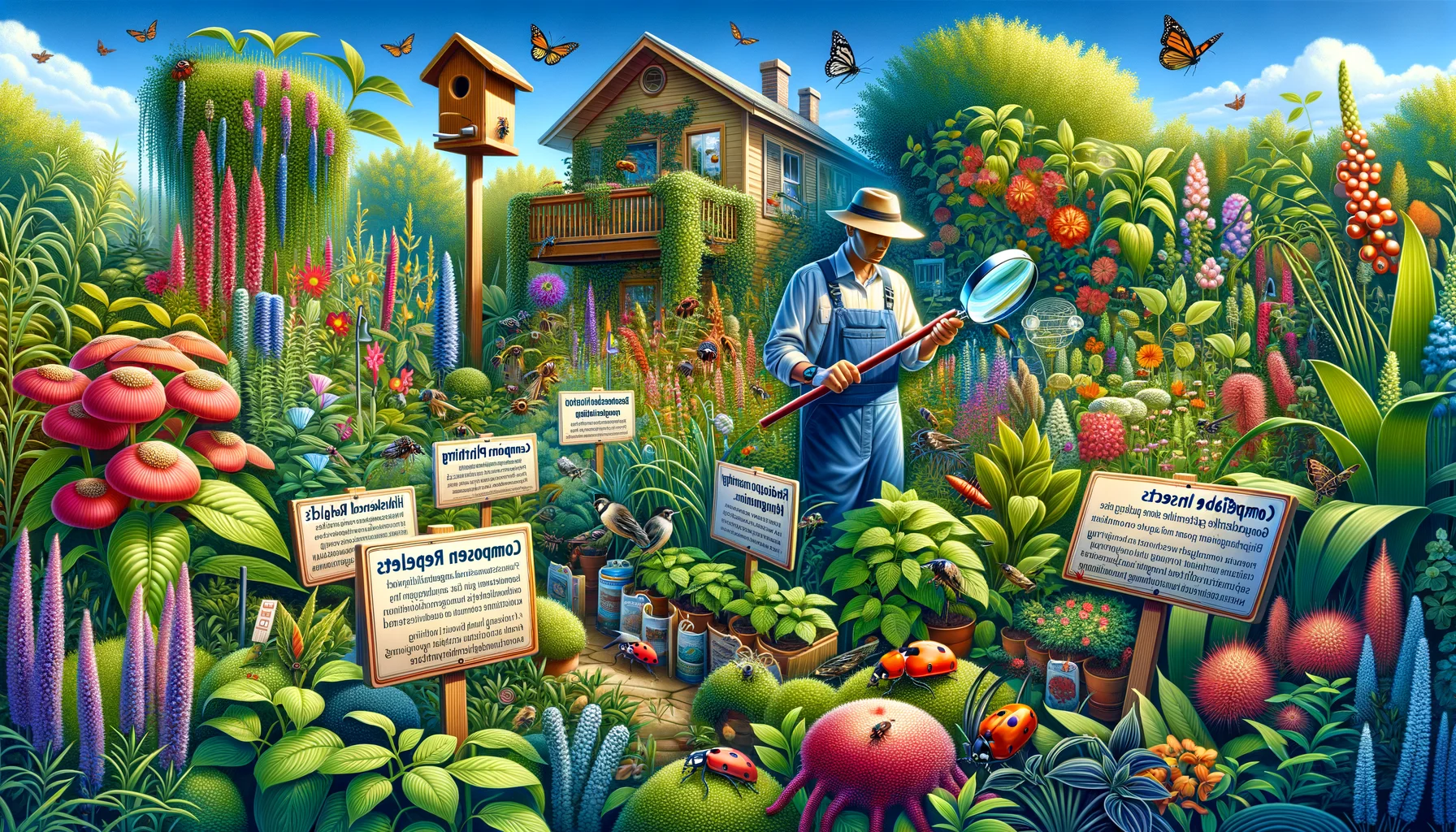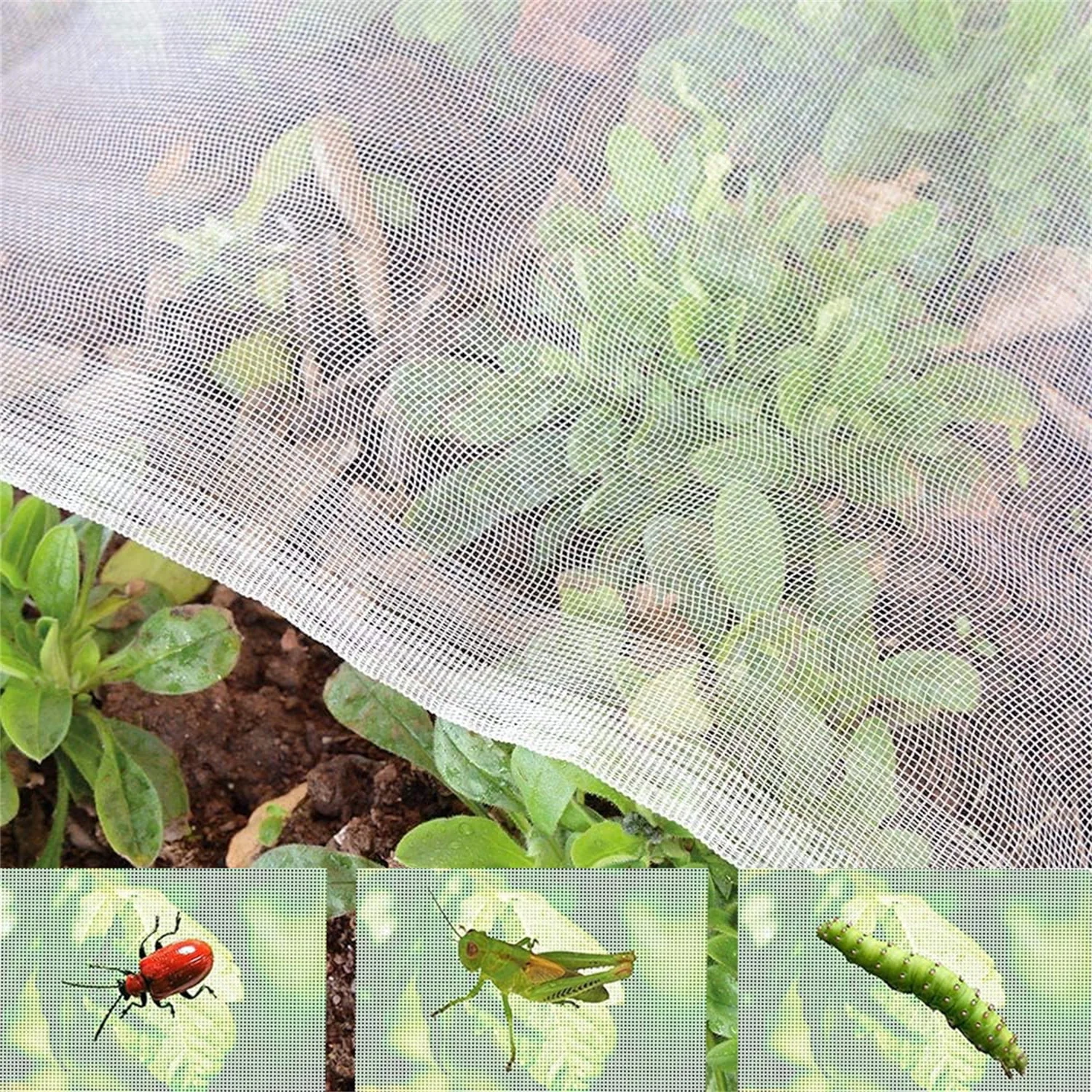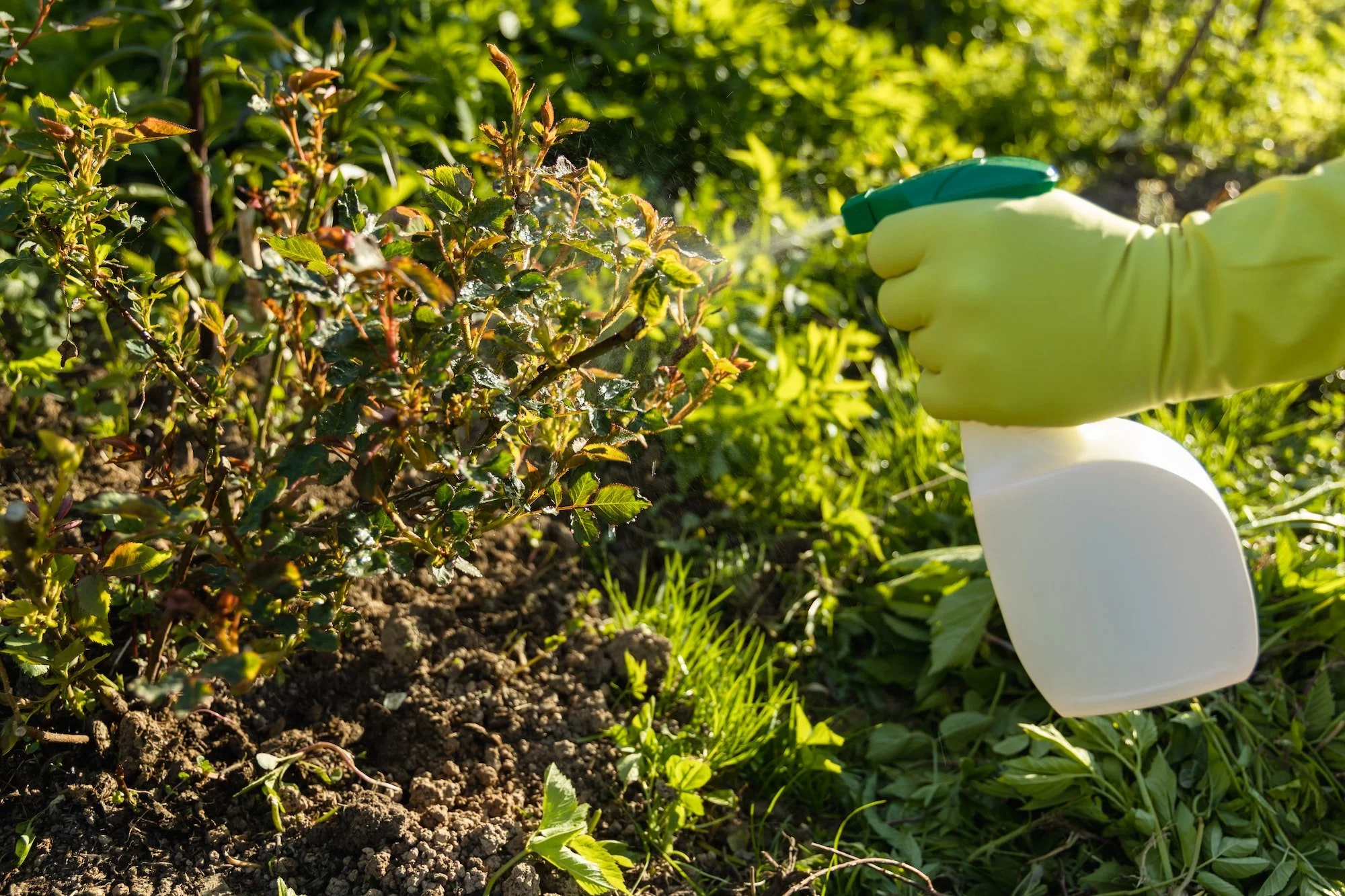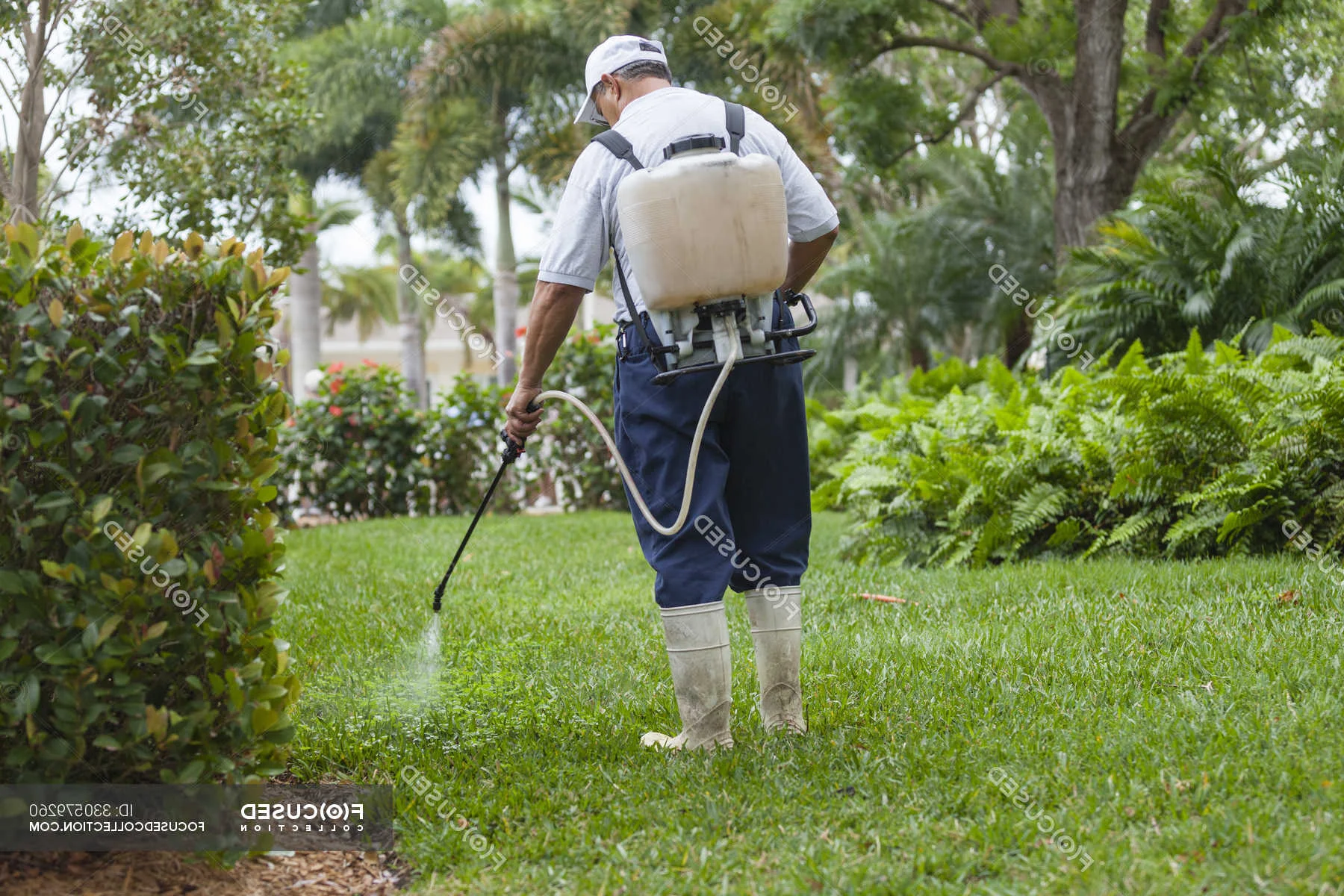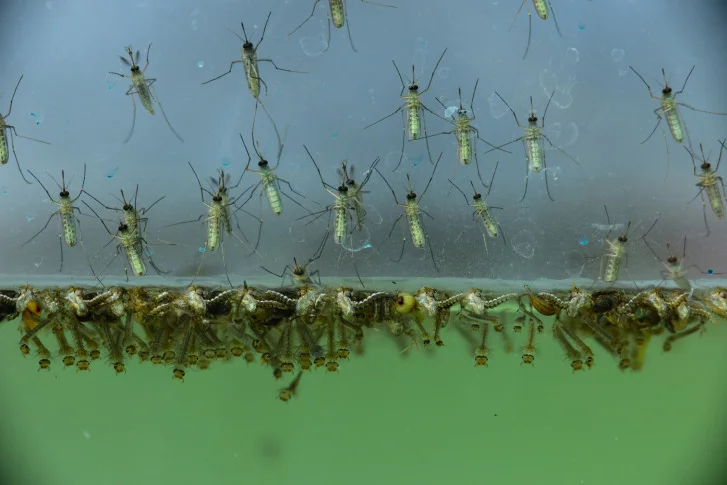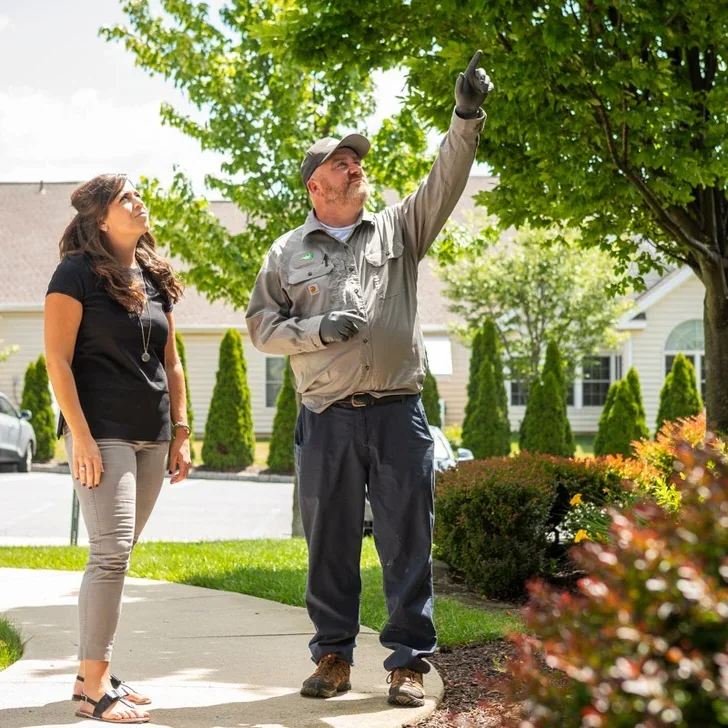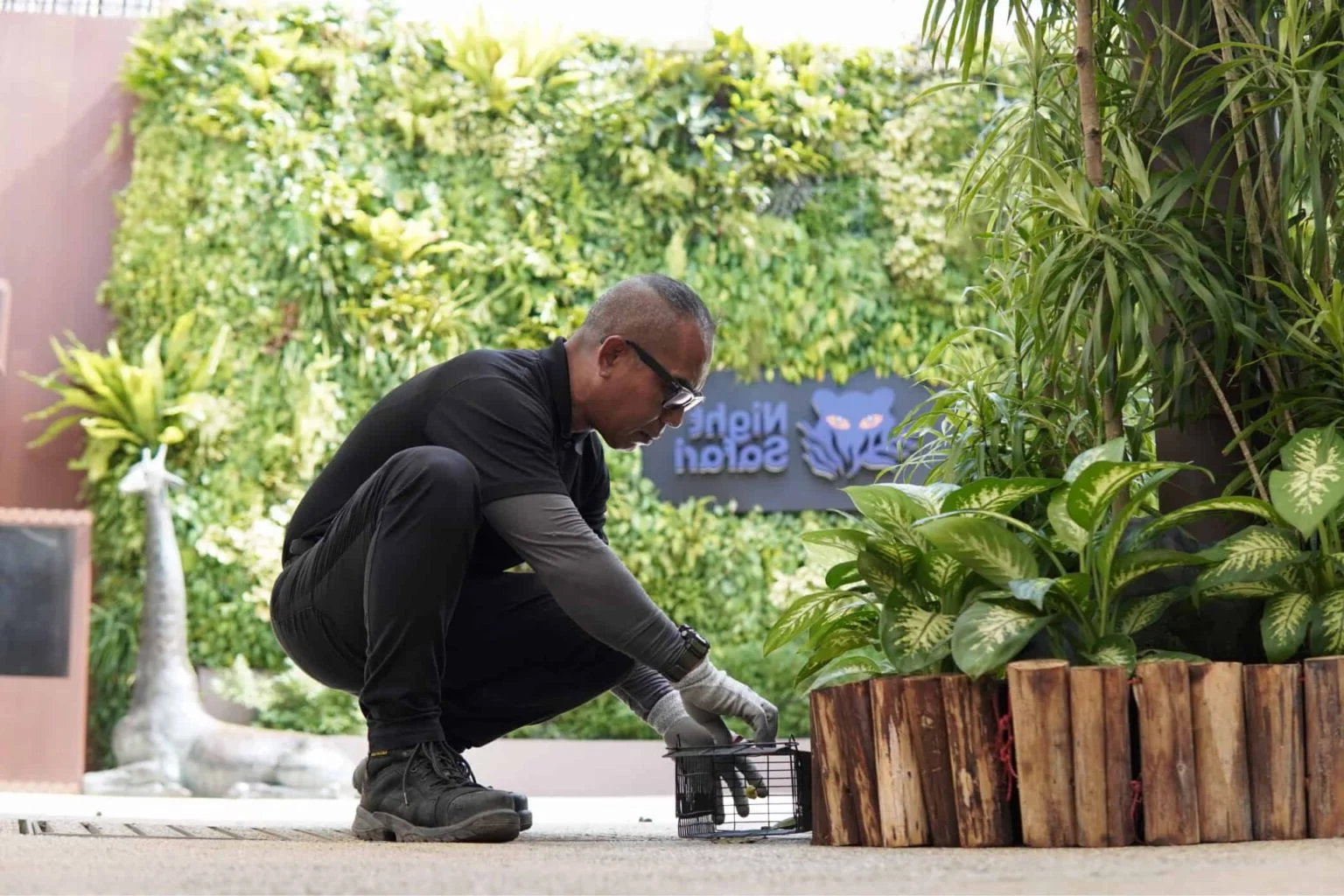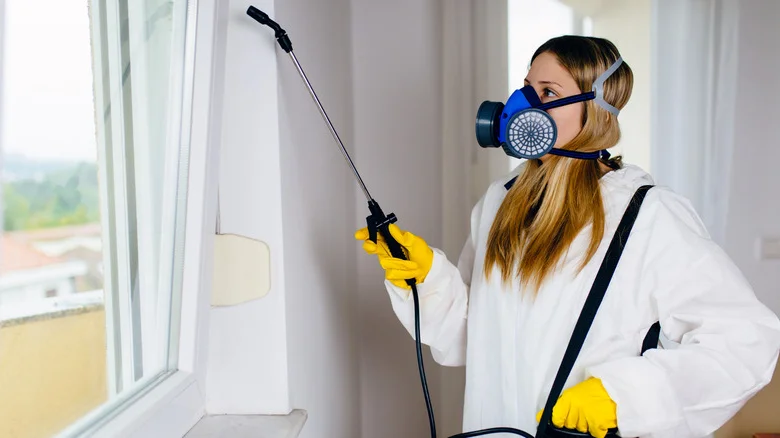When millipedes begin appearing in large numbers around your property, it signals an underlying moisture imbalance that requires professional attention. These worm-like arthropods with their distinctive cylindrical bodies and numerous legs may seem harmless, but massive migrations can create significant problems for property owners. Unlike aggressive pests, millipedes are decomposer organisms that feed on decaying organic matter, making their presence an indicator of excess moisture and organic debris accumulation that can attract more serious pest problems. Effective millipede control addresses both the immediate infestation and the environmental conditions that support their population growth.
Professional millipede extermination involves comprehensive moisture management, organic matter reduction, and targeted treatments that eliminate existing populations while preventing future mass migrations. Understanding millipede ecology, seasonal behavior patterns, and habitat requirements allows pest control specialists to develop integrated management strategies that provide long-lasting results. With proper environmental modification and professional treatment, properties can remain free from millipede invasions while addressing the underlying conditions that initially attracted these moisture-loving arthropods.
Millipede invasion overwhelming your property? Our specialists provide
emergency pest control
24/7 and comprehensive
millipede treatment to stop migrations before they escalate.
Get help now for immediate relief!
Understanding Millipede Biology and Behavior
Millipedes are fascinating decomposer organisms that play crucial ecological roles in breaking down organic matter and recycling nutrients. However, their biology and behavior patterns can lead to problematic mass invasions when environmental conditions become favorable:
-
Moisture-dependent survival Millipedes possess minimal waterproofing and require consistently moist environments to prevent dehydration. They actively seek areas with high humidity and abundant moisture sources for survival and reproduction.
-
Decomposer feeding habits As detritivores, millipedes feed primarily on decaying plant material, organic mulch, and decomposing matter. Large accumulations of organic debris create ideal feeding and breeding conditions for population explosions.
-
Mass migration behavior When conditions become unfavorable outdoors, millipedes can migrate in massive numbers seeking suitable habitat. These migrations often bring them into contact with structures where they become unwelcome invaders.
-
Defensive chemical secretions Many millipede species can secrete defensive chemicals when threatened, causing staining and potential skin irritation. These secretions can also create unpleasant odors during large-scale infestations.
-
Seasonal activity cycles Millipede activity peaks during specific seasons depending on moisture and temperature conditions. Understanding these cycles helps predict and prevent problematic population buildups before they reach invasion levels.
Professional millipede pest control leverages this biological understanding to target treatments during vulnerable periods and modify environmental conditions that support mass population development.
Common Millipede Species and Identification
Different millipede species present varying challenges for control and require specific management approaches based on their habitat preferences and behavior patterns:
Garden Millipede
Garden millipede identification and management
Garden millipedes are among the most common species encountered around residential properties, typically measuring 1-2 inches in length with dark brown or black coloration. They thrive in mulched garden beds, compost areas, and any location with abundant organic matter and consistent moisture levels.
These millipedes become problematic when their populations explode due to ideal breeding conditions, leading to mass migrations that bring them into homes and businesses. While harmless to plants and humans, their sheer numbers and tendency to curl up when disturbed can create significant nuisance issues requiring professional garden millipede control strategies.
Greenhouse Millipede
Thorough inspection for millipede breeding areas
Greenhouse millipedes are smaller, lighter-colored species that prefer extremely moist conditions found in greenhouse environments, potted plants, and indoor growing facilities. Their pale coloration and smaller size make them less noticeable until populations reach problematic levels.
These millipedes can establish permanent indoor populations in suitable environments, making them particularly challenging for facilities with high humidity requirements. Professional management focuses on environmental modification and targeted treatments that address breeding sites without disrupting sensitive growing conditions.
Flat-backed Millipede
Creating barriers against millipede migration
Flat-backed millipedes are characterized by their flattened body profile and tendency to hide under rocks, logs, and debris during daylight hours. They're particularly common in areas with heavy leaf litter and organic ground cover that provides both food and shelter.
These species are known for their mass migration behavior during weather changes, often overwhelming properties when outdoor conditions force them to seek new habitat. Their flattened bodies allow them to squeeze through surprisingly small gaps, making exclusion work an important component of control programs.
Pill Millipede
Pill millipedes are distinctive for their ability to roll into tight balls when threatened, similar to pill bugs but with more body segments and legs. They prefer extremely moist conditions and are often found near water sources, in basements, and around foundation areas with poor drainage.
While generally remaining outdoors, pill millipedes may invade structures during dry periods when seeking moisture. Their rolling behavior and tendency to cluster in large numbers can create significant nuisance problems that require targeted professional management focusing on moisture elimination and exclusion work.
Environmental Factors and Habitat Management
Environmental assessment for millipede habitat modification
Successful millipede control requires comprehensive understanding and modification of environmental factors that support population development and mass migration events. Professional habitat management addresses moisture sources, organic matter accumulation, and landscape features that create ideal millipede breeding and shelter conditions.
Environmental modification provides the most sustainable approach to millipede management by eliminating root causes rather than treating symptoms. This strategy reduces reliance on chemical treatments while providing long-term protection against future millipede invasions and related moisture-loving pest problems.
-
Organic matter management Systematic reduction of leaf litter, mulch accumulation, compost proximity to structures, and organic debris that provides food sources and breeding habitat for millipede populations.
-
Moisture source elimination Identification and correction of irrigation issues, drainage problems, water leaks, and other moisture sources that create the humid conditions essential for millipede survival.
-
Landscape modification Strategic changes to plantings, ground cover, and landscape features that reduce millipede-friendly habitat while maintaining aesthetic appeal and property functionality.
-
Drainage improvement Installation or enhancement of drainage systems, grading corrections, and water management features that eliminate standing water and reduce soil moisture levels.
-
Vegetation management Selective removal or modification of dense vegetation, ground cover, and plant materials that create humid microclimates favorable to millipede establishment.
Ecosystem Balance
Professional habitat modification maintains ecological balance by reducing millipede habitat while preserving beneficial organisms and environmental functions that support healthy landscape ecosystems.
Professional Millipede Treatment Strategies
Specialized millipede treatment application techniques
Professional millipede extermination employs integrated treatment strategies that combine immediate population reduction with long-term environmental management. Unlike simple pesticide applications, comprehensive millipede control addresses the ecological factors that support mass population development and migration events.
Treatment programs are customized based on millipede species, population density, seasonal timing, and environmental conditions that influence millipede behavior. This scientific approach ensures maximum effectiveness while minimizing environmental impact and promoting sustainable pest management practices.
| Treatment Strategy |
Target Areas |
Duration of Effectiveness |
| Perimeter Barrier Treatments |
Foundation areas, entry points, and migration pathways where millipedes travel toward structures
|
60-90 days of protection against millipede migration; weather-resistant formulations provide extended coverage.
|
| Habitat Source Treatments |
Mulch beds, compost areas, and organic matter accumulations where millipedes breed and develop
|
Immediate population reduction with residual activity that prevents re-establishment in treated breeding areas.
|
| Moisture Control Applications |
Drainage areas, irrigation zones, and moisture collection points that support millipede survival
|
Long-term environmental modification that eliminates conditions necessary for millipede population development.
|
| Mass Migration Intervention |
Active migration routes and barrier lines designed to redirect or eliminate migrating populations
|
Immediate intervention during active migrations with follow-up treatments to prevent future migration events.
|
| Exclusion and Sealing |
Entry points, gaps, and access routes that allow millipede intrusion into structures during migrations
|
Permanent protection when properly installed; prevents invasion even during heavy millipede pressure periods.
|
Stop millipede invasions before they overwhelm your property. Our expert technicians provide
comprehensive millipede pest control with proven results –
schedule your service and protect your space from mass migrations!
Seasonal Millipede Activity and Migration Patterns
Spring (March-May)
- Increased activity as soil temperatures warm
- Breeding season begins for most species
- Young millipedes emerge and develop
- Optimal time for habitat modification
Recommendation: Schedule comprehensive habitat assessments and environmental modifications before population peaks.
Summer (June-August)
- Peak population development period
- Drought-induced migration events
- Maximum feeding and growth activity
- Critical period for moisture management
Recommendation: Maintain moisture control and monitor for early signs of population buildup before migration season.
Fall (September-November)
- Primary migration season begins
- Weather-driven shelter seeking behavior
- Peak invasion period for structures
- Mass movement events most common
Recommendation: Peak season for barrier treatments and exclusion work to prevent mass invasions during migration period.
Winter (December-February)
- Reduced activity in cooler climates
- Sheltering in protected areas
- Continued activity in mild regions
- Planning season for prevention programs
Recommendation: Plan comprehensive spring habitat modification and assess effectiveness of previous season's control measures.
Mass Migration Management and Emergency Response
Emergency response for millipede mass migration events
Millipede mass migrations can overwhelm properties with thousands or even millions of individuals moving simultaneously toward structures seeking favorable habitat. These events require immediate professional intervention to prevent property invasion and address the environmental triggers that initiated the migration behavior.
Emergency millipede control during migration events involves rapid deployment of barrier treatments, population reduction strategies, and immediate environmental modifications that redirect or eliminate migrating populations before they establish in protected areas around structures.
-
Rapid barrier deployment Immediate application of treatment barriers along migration routes and around structures to intercept and eliminate migrating millipede populations before they reach buildings.
-
Source population treatment Targeted treatment of breeding and staging areas where migration populations originate, reducing overall migration pressure and preventing continued mass movement.
-
Environmental trigger modification Quick identification and correction of moisture or habitat conditions that triggered the migration event, preventing continued attraction to the affected area.
-
Exclusion reinforcement Emergency sealing of entry points and vulnerable areas to prevent millipede invasion during peak migration pressure periods when normal barriers may be overwhelmed.
-
Population monitoring Deployment of monitoring systems to track migration patterns and intensity, allowing for strategic treatment deployment and migration prediction for future events.
Migration Triggers
Millipede migrations are typically triggered by sudden environmental changes such as heavy rainfall followed by drought, extreme temperature fluctuations, or disturbance of established habitat areas.
Comprehensive Moisture Management and Prevention
Identifying and eliminating moisture sources that attract millipedes
Effective millipede prevention requires comprehensive moisture management that addresses both obvious water sources and subtle humidity factors that support millipede survival and reproduction. Professional moisture assessment identifies conditions that create favorable millipede habitat while providing sustainable solutions that maintain property functionality.
Long-term moisture management provides the most cost-effective approach to millipede control by eliminating the root environmental conditions that support population development. This strategy reduces ongoing treatment requirements while protecting property from moisture-related damage and associated pest problems.
-
Irrigation system optimization Assessment and modification of landscape irrigation to eliminate overwatering, improve water distribution efficiency, and reduce moisture accumulation in millipede-prone areas.
-
Drainage system enhancement Installation or improvement of surface and subsurface drainage systems that eliminate standing water and reduce soil moisture levels around structures.
-
Grading and slope correction Modification of soil grading around foundations and landscape areas to ensure proper water runoff and prevent moisture collection in vulnerable zones.
-
Vegetation selection and placement Strategic landscaping choices that reduce water requirements and eliminate dense, moisture-retaining vegetation that creates humid microclimates.
-
Structural moisture barriers Installation of barriers, waterproofing, and moisture control systems that prevent water intrusion and maintain appropriate humidity levels around structures.
Integrated Pest Management for Millipedes
Integrated pest management approach for sustainable millipede control
Integrated Pest Management (IPM) for millipedes emphasizes ecological understanding and environmental management to achieve sustainable, long-term control with minimal chemical intervention. This holistic approach recognizes millipedes as indicator species that reveal broader environmental imbalances requiring systematic correction.
IPM programs combine biological knowledge, environmental modification, and targeted treatments to create comprehensive management strategies that address millipede problems while promoting overall ecosystem health and reducing ongoing pest pressure from multiple species.
| IPM Component |
Application Methods |
Long-term Benefits |
| Environmental Monitoring |
Regular assessment of moisture levels, organic matter accumulation, and habitat conditions
|
Early detection of conditions favoring millipede population development; prevents mass migration events.
|
| Habitat Modification |
Systematic changes to landscaping, drainage, and organic matter management practices
|
Eliminates root causes of millipede problems; provides protection against multiple moisture-loving pest species.
|
| Biological Understanding |
Application of millipede ecology knowledge to predict and prevent problematic population buildups
|
Enables proactive management that prevents problems rather than treating established infestations.
|
| Targeted Interventions |
Precise treatments applied only when and where necessary based on monitoring and assessment
|
Minimizes environmental impact while maximizing effectiveness; reduces treatment costs and frequency.
|
| Education and Training |
Property owner education in maintenance practices that support long-term millipede prevention
|
Empowers property owners to maintain control; prevents conditions that lead to future infestations.
|
Commercial Millipede Management
Professional commercial millipede management solutions
Commercial properties face unique millipede challenges related to larger landscape areas, complex irrigation systems, and the need to maintain professional appearances while managing moisture-related pest issues. Commercial millipede control must address these concerns while providing cost-effective solutions that protect business operations and customer experiences.
Business environments require sophisticated millipede management that integrates with existing landscape maintenance, building operations, and regulatory compliance requirements. Professional commercial services provide customized solutions that address industry-specific challenges while maintaining effective millipede prevention and control.
Industry-Specific Applications
-
Hospitality and resorts Comprehensive millipede management for hotels and recreational facilities that maintains aesthetic appeal while protecting guest areas from mass migration events and moisture-related pest issues.
-
Healthcare facilities Specialized approaches for medical environments that consider patient safety, equipment sensitivity, and regulatory requirements while providing effective millipede control.
-
Educational institutions School and university millipede management that protects students and staff while providing educational opportunities about pest ecology and environmental management.
-
Manufacturing and warehouses Industrial millipede control that addresses large facility challenges, loading dock moisture issues, and the need for minimal disruption to operations.
-
Agricultural operations Farm and greenhouse millipede management that balances pest control needs with crop protection and beneficial organism conservation requirements.
What Our Clients Say About Millipede Control
"Our property was invaded by thousands of millipedes every fall until PestControl100 addressed our drainage problems and treated the source areas. Their comprehensive approach has kept us millipede-free for three years running!"
- Robert M., Property Manager
★★★★★
"The millipede migrations around our hotel were affecting guest satisfaction. PestControl100's team developed a custom management program that eliminated the problem without impacting our landscaping. Professional service that delivered results."
- Maria S., Hospitality Manager
★★★★★
"We tried everything to stop millipedes from invading our basement until PestControl100 identified the moisture sources we missed. Their environmental approach worked where chemical treatments failed. Excellent problem-solving!"
- David L., Homeowner
★★★★★
Frequently Asked Questions
Why do millipedes suddenly appear in large numbers?
Millipede mass appearances are typically triggered by environmental changes that make their outdoor habitat unsuitable. Heavy rainfall followed by drought, temperature extremes, or disturbance of their breeding areas can trigger mass migrations as they seek more favorable conditions. These events are natural but can be prevented through proper habitat management and moisture control around properties.
Are millipedes harmful to humans, pets, or plants?
Millipedes are generally harmless to humans, pets, and plants. They don't bite or sting, and they actually benefit ecosystems by decomposing organic matter. However, some species can secrete defensive chemicals that may cause skin irritation or staining. The main concern is their nuisance factor when they appear in large numbers and their indication of moisture problems that could attract more serious pests.
How effective are professional millipede treatments?
Professional millipede control is highly effective when it addresses both the immediate population and the environmental conditions that support them. Treatments typically provide immediate population reduction within days, with long-term protection achieved through habitat modification and moisture management. Comprehensive programs that include environmental changes can prevent millipede problems for years with minimal ongoing treatment.
What's the difference between millipedes and centipedes?
Millipedes have two pairs of legs per body segment and move slowly, while centipedes have one pair of legs per segment and move quickly. Millipedes are decomposers that feed on organic matter and curl up when threatened, while centipedes are predators that hunt other insects and rarely curl up. Millipedes require very moist conditions and appear in large numbers, while centipedes are typically seen individually and can tolerate drier conditions. Both indicate moisture problems but require different management approaches.
Millipede Prevention and Property Management
Comprehensive perimeter protection against millipede invasion
Effective millipede prevention requires understanding the environmental factors that support population development and implementing systematic changes that eliminate favorable conditions. Professional prevention programs focus on long-term habitat modification rather than reactive treatments, providing sustainable protection that reduces ongoing millipede risks.
Prevention strategies work best when integrated with overall property maintenance and landscape management practices. This approach ensures that millipede control measures enhance rather than conflict with other property management goals while providing comprehensive protection against moisture-related pest issues.
-
Landscape design modifications Strategic planning of plant selections, ground cover choices, and landscape features that reduce moisture retention and organic matter accumulation while maintaining aesthetic appeal.
-
Organic matter management protocols Systematic approaches to mulch application, compost placement, leaf litter removal, and organic debris management that reduce millipede breeding habitat.
-
Irrigation system optimization Water management strategies that maintain plant health while minimizing excess moisture and humidity that supports millipede survival and reproduction.
-
Drainage and grading improvements Structural modifications that ensure proper water flow, eliminate standing water, and reduce soil moisture levels in areas prone to millipede establishment.
-
Regular monitoring and maintenance Scheduled inspections and maintenance activities that identify and address millipede-favorable conditions before population buildups can occur.
Advanced Millipede Detection and Management Technology
Modern technology enhances millipede detection and management
Modern millipede pest control incorporates advanced technology to improve population monitoring, environmental assessment, and treatment precision. These technological advances enable early detection of conditions favoring millipede population development and allow for proactive intervention before mass migration events occur.
Technology-enhanced millipede management represents a shift from reactive treatment approaches to predictive, science-based strategies that prevent problems through environmental monitoring and data-driven decision making.
-
Environmental monitoring sensors Automated systems that track moisture levels, temperature conditions, and environmental factors that influence millipede population development and migration behavior.
-
Population detection systems Advanced monitoring tools that detect millipede activity and population buildups before they reach problematic levels, enabling early intervention strategies.
-
Moisture mapping technology Specialized equipment that creates detailed moisture profiles of properties, identifying problem areas and tracking the effectiveness of moisture management efforts.
-
Precision application equipment Targeted treatment systems that ensure accurate product placement while minimizing environmental impact and reducing treatment costs through efficient application methods.
-
Data analysis and prediction systems Software platforms that analyze environmental data and historical patterns to predict millipede activity and optimize treatment timing for maximum effectiveness.
Millipede Control Investment and Long-term Value
Professional millipede extermination represents a strategic investment in property protection, environmental health, and long-term pest prevention. Understanding the factors that influence millipede control costs helps property owners make informed decisions about treatment scope and timing.
| Investment Component |
Cost Factors |
Long-term Returns |
| Initial Assessment |
Property size, landscape complexity, moisture evaluation requirements, accessibility factors
|
Identifies all millipede attractants and provides roadmap for comprehensive prevention; prevents costly future infestations.
|
| Environmental Modification |
Scope of drainage work, landscape changes needed, irrigation system modifications required
|
Eliminates root causes of millipede problems while improving property value and preventing multiple pest species.
|
| Treatment Applications |
Population density, treatment area size, seasonal timing, product selection requirements
|
Provides immediate relief and ongoing protection through residual treatments and barrier systems.
|
| Exclusion and Barriers |
Number of vulnerable areas, materials required, installation complexity factors
|
Permanent protection against millipede invasion during migration events; prevents property damage from mass invasions.
|
| Ongoing Maintenance |
Monitoring frequency, seasonal treatment needs, landscape maintenance integration
|
Maintains millipede-free conditions and preserves property investment through proactive environmental management.
|
Comprehensive Value Proposition
Professional millipede control typically costs significantly less than dealing with mass migration events, property damage from moisture problems, and the ongoing stress of recurring millipede invasions.
Don't wait for the next millipede migration. Trust PestControl100 for comprehensive
millipede control that eliminates current problems and prevents future invasions –
contact us today for lasting protection and peace of mind!
Millipede Control Service Areas
Our certified millipede specialists provide comprehensive control services throughout regions prone to millipede populations and migration events. We understand local environmental conditions, seasonal patterns, and landscape factors that influence millipede activity.
Climate-Specific Expertise
We specialize in millipede control for humid climates, regions with seasonal moisture variations, and areas prone to mass migration events. Our teams understand how local weather patterns and environmental conditions influence millipede behavior and population development.
Comprehensive Environmental Management
From small residential gardens to large commercial landscapes, our millipede control services address the unique environmental challenges that create millipede problems. We provide integrated solutions that work with your property's specific conditions and requirements.
Our Millipede Control Coverage Map

